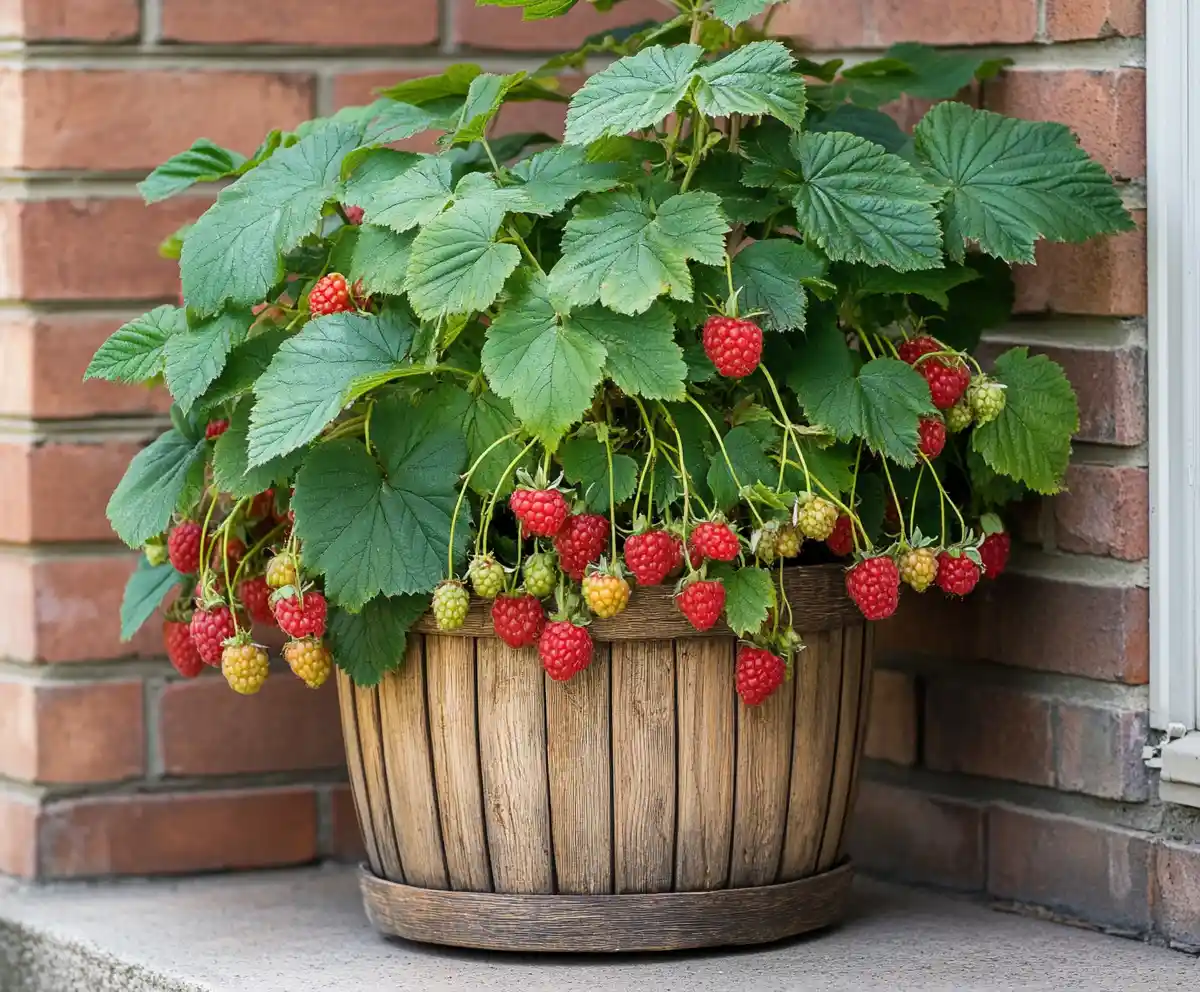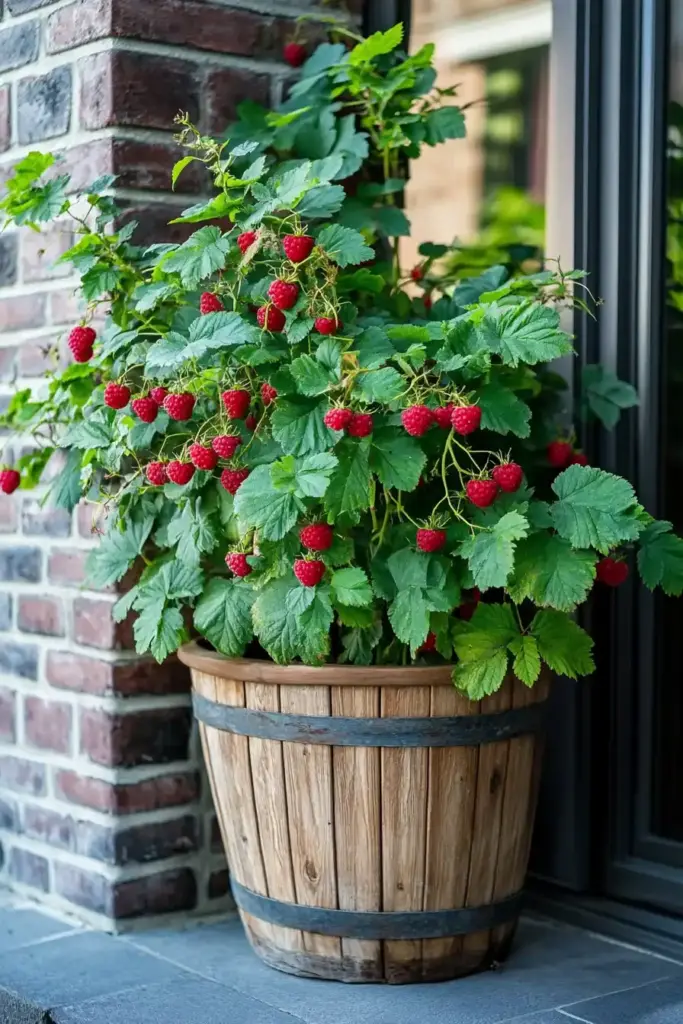If you’re looking for a rewarding, low-maintenance plant to grow at home, raspberry plants might just be your perfect match. These vibrant fruiting shrubs not only add a burst of color to your garden but also deliver sweet, antioxidant-rich berries right from your backyard. Whether you’re an urban gardener with just a few pots or have a spacious backyard plot, raspberry plants adapt beautifully to different environments—especially when grown in containers. They’re resilient, productive, and surprisingly simple to manage, making them a favorite among both beginner and seasoned gardeners.
Growing raspberry plants at home means access to fresh, pesticide-free berries and the joy of cultivating something truly delicious. In this guide, we’ll walk you through everything from seed-starting in pots to pollination tips, companion planting strategies, and even how raspberries can benefit your health.
Let’s dig in—starting with how to grow raspberries from seeds in pots.
Table of Contents
🌱 How to Grow Raspberries from Seeds in Pots
Raspberry plants are remarkably well-suited for container gardening, making them an excellent choice for patios, balconies, or small garden spaces. Growing raspberries from seeds in pots is cost-effective and gives you full control over soil conditions and plant care. Let’s break it down step by step:
🍓 0.1 Berry Variety: Choosing the Right Type
When selecting seeds, the first thing to consider is the berry variety. Raspberry plants come in several types, but the two most popular categories are:
- Summer-bearing: These produce one large crop in early to mid-summer.
- Ever-bearing (also called fall-bearing): These can yield two harvests—one in summer and one in fall.
Common color varieties include red, golden yellow, and black raspberries. Red raspberries are the easiest to grow for beginners. Before sowing, soak the seeds in lukewarm water for 24–48 hours to soften the outer shell and promote germination.
🪴 0.2 Pot & Soil: Setting the Foundation
Choose a pot that’s at least 18–24 inches (45–60 cm) in diameter and has ample drainage holes. Raspberry plants have deep root systems and need room to grow.
For soil:
- Use a well-draining, loamy mix with organic compost.
- Aim for a pH between 5.5 and 6.5—slightly acidic.
- Add peat moss or aged manure to boost moisture retention and fertility.
Tip: If your soil is too acidic, mix in some lime to balance the pH.
💧 0.3 Water & Sunlight: Essentials for Growth
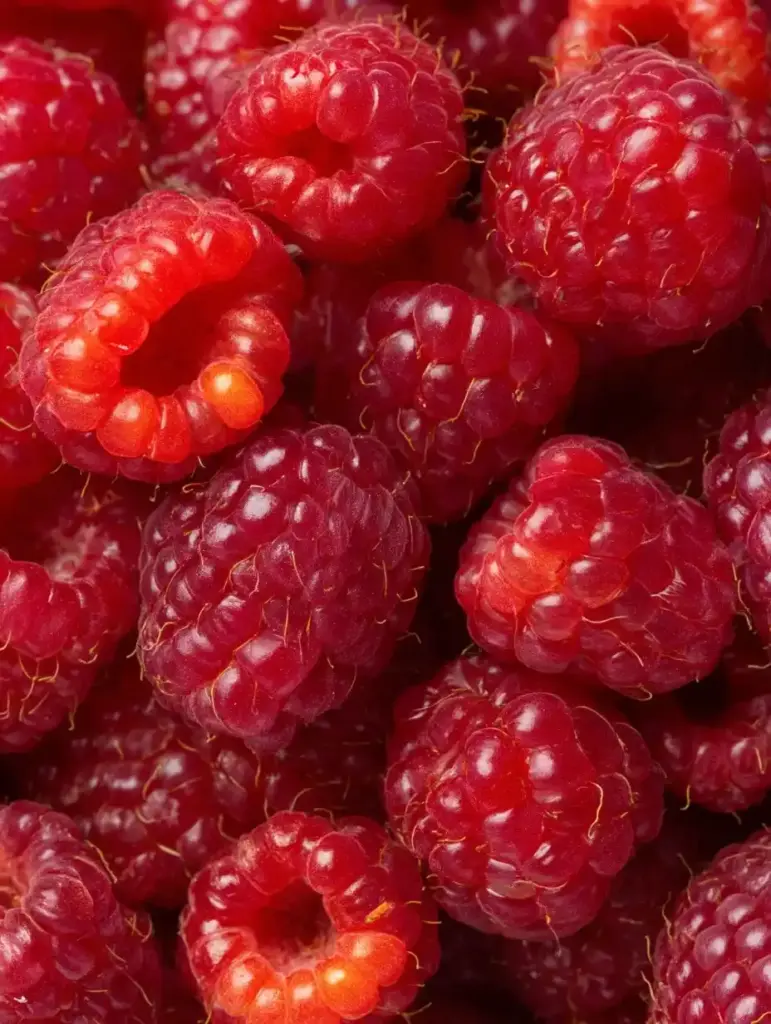
Raspberry plants thrive with consistent care:
- Water: Keep the soil evenly moist. Water about 1–2 inches per week, depending on weather.
- Sunlight: Ensure at least 6–8 hours of direct sun daily. South-facing spots are ideal.
- Temperature: Maintain a growing range of 65–75°F (18–24°C) for optimal development.
Avoid overwatering—soggy soil can lead to root rot.
🌱 0.4 Planting: From Seed to Seedling
After soaking, plant seeds ¼ inch deep in moist soil. Cover lightly and place the pot in a warm, sunny spot or under grow lights indoors. Germination takes about 2–4 weeks.
Once seedlings appear:
- Thin them out, keeping the strongest.
- Allow the plant to grow for several more weeks.
- When it reaches 4–6 inches, begin light pruning of any leggy or weak growth.
As it matures, your raspberry plant will start forming canes and leafy branches.
🥬 0.5 Nutrient Deficiency: Spotting and Solving
Healthy raspberry plants have rich green leaves and vigorous stems. Watch out for these deficiency signs:
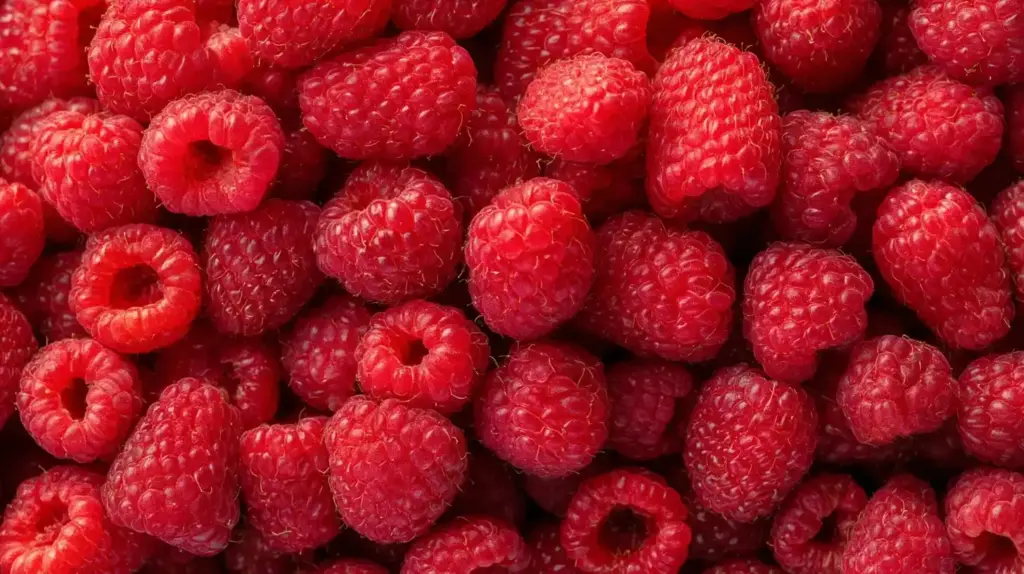
| Nutrient | Deficiency Symptom |
|---|---|
| Nitrogen | Pale yellow leaves, stunted growth |
| Phosphorus | Purplish leaves, delayed maturity |
| Potassium | Browning or scorched leaf edges |
| Magnesium | Yellowing between leaf veins |
| Iron | Pale leaves with green veins |
Use a balanced organic fertilizer (like compost tea or fish emulsion) to correct these issues naturally.
🐛 0.6 Pests & Diseases: Staying Ahead
Even in containers, raspberry plants can attract pests. Common culprits include:
- Aphids
- Spider mites
- Fruit flies
- Raspberry beetles
Diseases to watch for:
- Cane blight
- Powdery mildew
- Leaf spot
Combat these using:
- Neem oil sprays
- Insecticidal soap
- Removing infected leaves immediately
Keep the growing area clean and ensure good air circulation to prevent fungal spread.
🌿 0.7 Fertilizers: Feeding for Fruitfulness
Once the plant is about 6–12 inches tall, it’s time to fertilize:
- Use an NPK-balanced organic fertilizer (10-10-10) or compost-rich topdressing.
- Apply in early spring and again after fruiting.
Avoid over-fertilization, which can lead to lush foliage but few fruits.
🍇 0.8 Harvesting: Picking at Peak Ripeness
In about 3–4 months, your raspberry plant will begin producing fruit. Signs it’s time to harvest:
- Berries are deep in color (red, black, or golden).
- They detach easily from the plant.
- Taste test: Riper berries are sweeter and more aromatic.
Harvest early in the morning, rinse gently, and store in the fridge for up to 3 days—or enjoy immediately!
🌿 Growing Raspberries from Cuttings
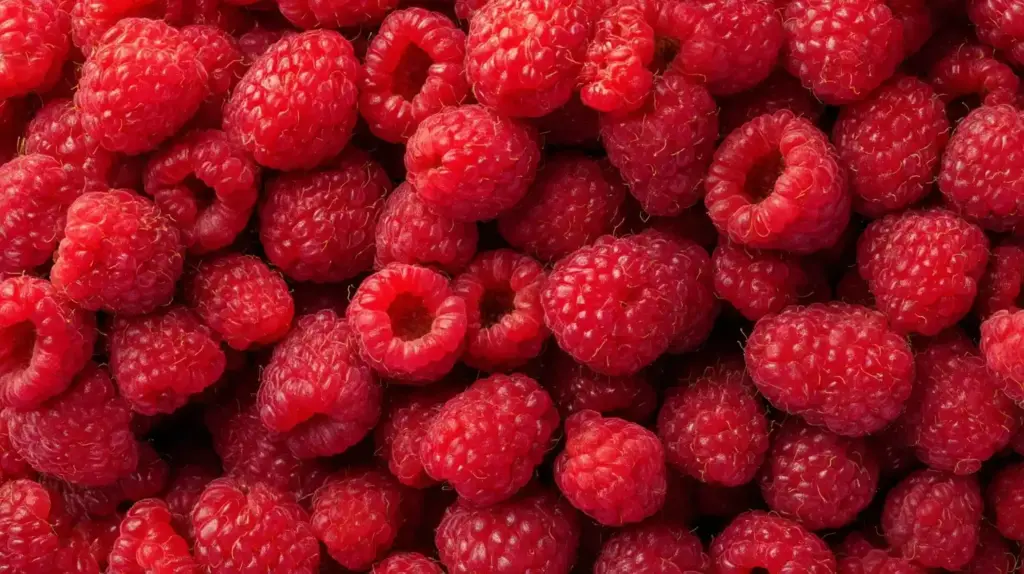
While growing raspberry plants from seeds is rewarding, propagating them from cuttings offers a faster, more reliable method—especially for preserving the qualities of a specific variety. If you already have a mature plant or know someone who does, this method can yield strong, fruit-bearing canes in a fraction of the time.
Here’s how to successfully grow raspberry plants from stem cuttings:
✂️ Step-by-Step Guide to Propagating Raspberry Cuttings
- Select Healthy Canes
Choose a vigorous, disease-free raspberry cane from a mature plant. Look for stems that are green, firm, and around ¼ inch thick. - Cut the Stem
Using clean, sharp pruners or a garden knife, trim a 4–6 inch section of the cane. Ideally, take softwood or semi-hardwood cuttings in late spring or early summer. - Remove Lower Leaves
Strip the bottom leaves, leaving 2–3 leaves at the top. This helps the cutting focus its energy on developing roots. - Rooting in Water or Soil
You can root the cuttings using either method:- Water Method: Place the cuttings in a clear jar of clean water, and change the water every 2–3 days.
- Soil Method: Dip the cut end in rooting hormone and plant it in a small pot filled with moist, well-draining soil.
- Provide Ideal Conditions
Set the cuttings in a bright, warm location but out of direct sun. Ensure they get 6+ hours of indirect light daily. - Transplant When Ready
After about 3–4 weeks, roots will form. Once they are 1–2 inches long, transplant the new raspberry plants into larger pots or directly into your garden bed. - Feed and Maintain
After transplanting, water regularly and apply a gentle organic fertilizer to encourage growth. Avoid fruiting in the first season to allow the plant to strengthen.
🧑🌾 Expert Tip: Keep the soil consistently moist but never soggy. A plastic humidity dome or clear bag over the pot can help retain moisture during rooting.
This method gives you a head start toward harvesting sweet, homegrown raspberries in less time than starting from seed. Plus, it helps replicate reliable plants without relying on store-bought varieties.
🌼 Companion Planting: What Are Good Companion Plants for Raspberries?

Companion planting is a smart gardening strategy that improves plant health, deters pests, and enhances growth by pairing compatible species. When it comes to raspberry plants, selecting the right companions can make a big difference in yield and disease resistance.
Let’s explore which plants help your raspberry patch thrive—and which ones you should absolutely avoid.
✅ Best Companion Plants for Raspberry Plants
These plants either repel pests, enrich the soil, or attract beneficial pollinators to support raspberry growth:
- Marigolds
Deter nematodes, aphids, and beetles with their strong scent. - Garlic and Onions
Help prevent fungal diseases and keep pests like aphids at bay. - Tansy
Known for repelling beetles and ants while enhancing pollination. - Buckwheat
Attracts beneficial insects like hoverflies and parasitic wasps. - Spring Oats
Act as a living mulch and help suppress weeds while improving soil structure. - Sudangrass
Adds organic matter to the soil and helps reduce soil-borne pathogens.
These companions can be planted in nearby garden beds or in separate containers placed close to your raspberry plants.
🚫 Plants to Avoid Near Raspberry Plants
Certain plants can compete for nutrients, spread diseases, or attract harmful pests. Keep these away from your raspberry patch:
- Tomatoes
Susceptible to similar fungal diseases (e.g., verticillium wilt) that can spread. - Potatoes
Attract aphids and blight that can transfer to raspberries. - Eggplants
Also hosts verticillium wilt and competes for soil nutrients. - Blackberries
Prone to the same pests and diseases—growing them close can worsen outbreaks. - Strawberries
While tempting to pair, they can attract spider mites and other shared pests.
🌿 Pro Tip: Rotate your raspberry containers or planting zones every 2–3 years to reduce soil fatigue and disease buildup.
Thoughtful companion planting helps your raspberry plants stay healthier, yield more fruit, and require fewer chemical treatments.
🐝 Raspberry Plant Pollination: What You Need to Know
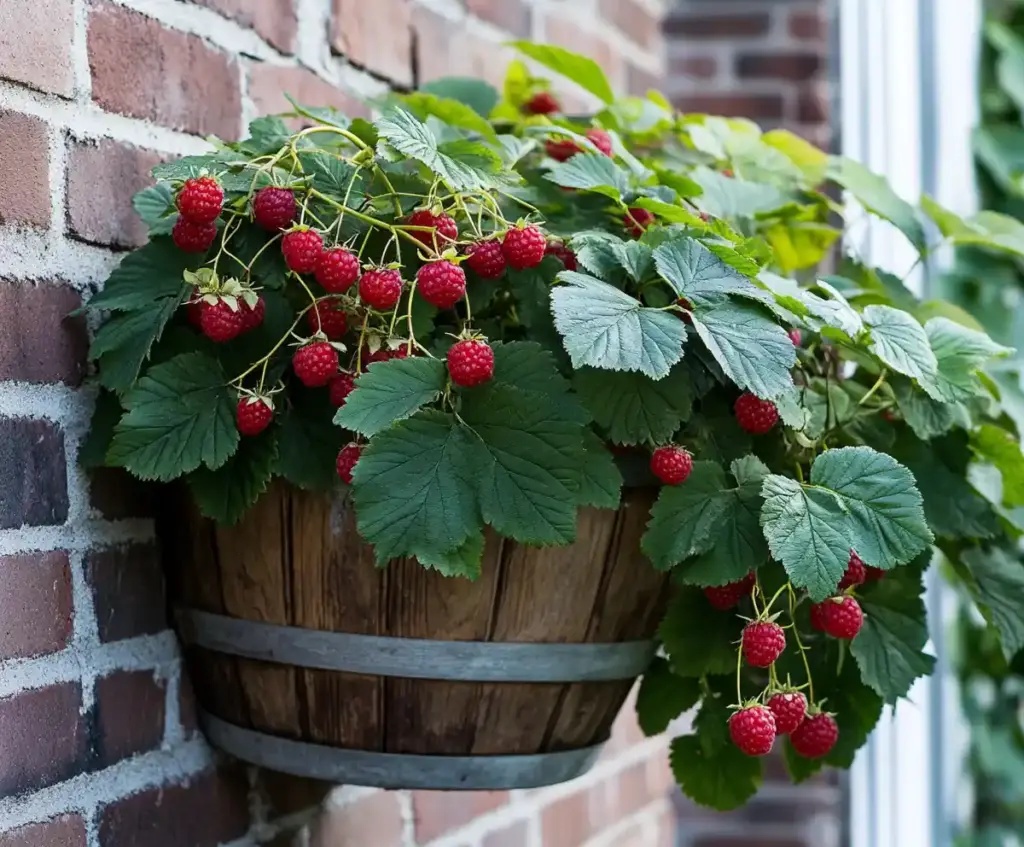
One of the most convenient features of raspberry plants is their ability to self-pollinate. Each flower contains both male and female reproductive parts, meaning they don’t need a second plant to produce fruit. However, that doesn’t mean pollinators don’t play a role—quite the opposite.
Understanding how pollination works in raspberries helps maximize your harvest.
🌼 Self-Pollinating but Bee-Friendly
While raspberry flowers are self-fertile, they still benefit significantly from pollinators, especially bees. When bees move from flower to flower, they:
- Increase pollination efficiency
- Improve fruit set
- Result in larger, juicier berries
Studies have shown that bee-pollinated raspberries tend to be sweeter and more uniform in shape.
🚫 Avoid Insecticides During Bloom
To protect pollinators:
- Never spray insecticides while flowers are in bloom.
- If necessary, apply treatments early in the morning or late in the evening, when bees are less active.
Also, consider planting pollinator-friendly flowers nearby—like lavender, borage, or echinacea—to attract bees to your raspberry patch naturally.
🌬️ Wind and Indoor Plants
If you’re growing raspberry plants indoors or in a greenhouse:
- Gently shake the canes to mimic wind and encourage pollen transfer.
- You can also use a small paintbrush to manually move pollen between flowers.
🧑🌾 Quick Tip: Encourage native bee activity by leaving small piles of twigs or creating bee hotels nearby. This improves your chances of strong fruit production.
In short, while raspberry plants don’t require cross-pollination, supporting natural pollination processes leads to a healthier, more productive harvest.
🌱 Growing Tips: Expert Advice for Thriving Raspberry Plants
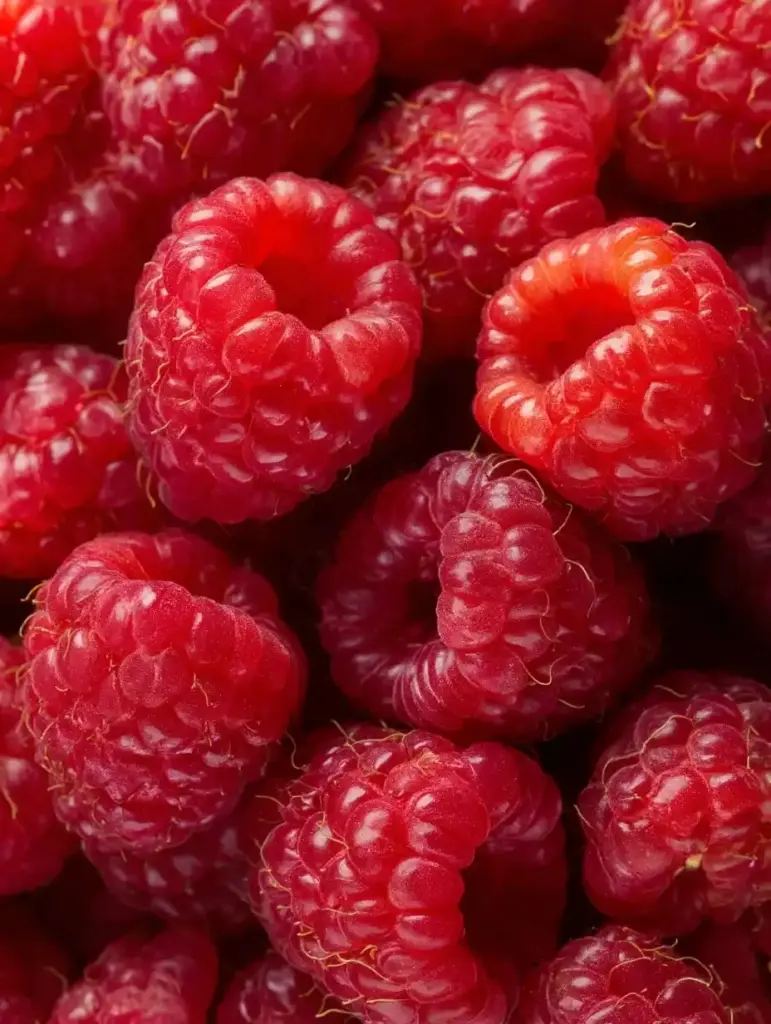
Whether you’re nurturing raspberries in pots or planting them in raised beds, a few expert-backed strategies can make all the difference between a struggling plant and a bountiful harvest. These growing tips will help ensure your raspberry plants remain healthy, productive, and pest-resistant throughout the season.
🧑🌾 1. Prune Strategically
- Trim young plants lightly to encourage bushier growth.
- For summer-bearing raspberries, prune canes that have already fruited after harvest.
- Fall-bearing varieties can be pruned back entirely in late winter for a single large autumn crop.
Pruning boosts air circulation, reduces disease risk, and redirects energy toward fruiting.
💧 2. Don’t Let the Soil Dry Out
Consistent moisture is crucial:
- Water deeply when the top inch of soil feels dry.
- Add mulch (like straw or shredded leaves) to retain moisture and suppress weeds.
Use containers with drainage holes to avoid waterlogging—raspberry plants hate wet feet.
🌞 3. Provide Plenty of Sunlight
Aim for 6–8 hours of full sun daily. While raspberries can tolerate partial shade, optimal sun exposure leads to:
- Better flowering
- Sweeter berries
- Reduced fungal issues
If you’re growing indoors, use full-spectrum grow lights for at least 12–14 hours a day.
🐾 4. Protect Your Plants from Pets
Although the berries are pet-safe in small amounts, avoid letting dogs or cats near fertilized plants. Fertilizers and mulches can be harmful if ingested.
Also, use fencing or netting to protect ripening berries from birds and squirrels.
🌱 5. Skip the First-Year Fruit (If Grown from Seed)
If you started from seed, it’s best to pinch off first-year flowers. This may feel counterproductive, but it allows the plant to focus on root and cane development. You’ll be rewarded with a heavier, healthier crop in year two.
👨🌾 6. Use Clean Tools and Wear Protection
Always:
- Disinfect your pruning shears between uses.
- Wear gloves when handling canes—they can be prickly.
- Harvest in the morning for best flavor and ease.
By following these hands-on tips, you’ll give your raspberry plants the best shot at producing plump, juicy berries—season after season.
🍓 Raspberries Health Benefits: Small Berries, Big Impact
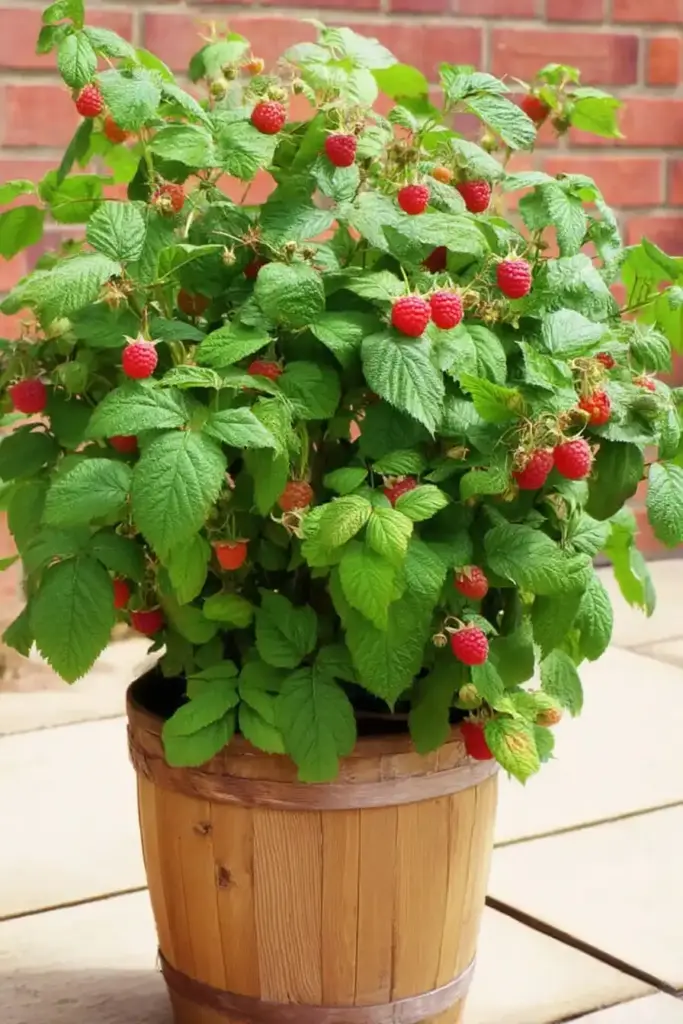
Raspberries aren’t just a delicious summer treat—they’re packed with nutrients that can positively impact your health in powerful ways. When you grow raspberry plants at home, you’re not only enjoying pesticide-free fruit, but also giving your body a natural boost with every bite.
Let’s explore the top health benefits of fresh raspberries.
💪 1. Rich in Antioxidants
Raspberries are high in vitamin C, quercetin, and ellagic acid, potent antioxidants that help:
- Protect cells from free radical damage
- Slow signs of aging
- Reduce inflammation throughout the body
This antioxidant-rich profile makes raspberries a great daily defense against chronic diseases.
❤️ 2. Supports Heart Health
Raspberries contain flavonoids and potassium, which support cardiovascular health by:
- Lowering blood pressure
- Improving blood vessel function
- Reducing LDL (bad) cholesterol levels
Regular consumption may reduce the risk of stroke and heart disease over time.
🍬 3. Helps Manage Blood Sugar
Despite their sweet taste, raspberries are low in sugar and high in dietary fiber, which helps:
- Regulate blood glucose levels
- Improve insulin sensitivity
- Slow the absorption of carbohydrates
This makes them a diabetes-friendly fruit—especially for people watching their sugar intake.
🧘♀️ 4. Aids Weight Management
Each cup of raspberries contains:
- ~8 grams of fiber
- Only ~60 calories
Their high water and fiber content promote a feeling of fullness, reducing overall calorie intake. The trace minerals, like magnesium and manganese, also support healthy metabolism.
🧠 5. Supports Brain and Immune Function
Thanks to their vitamin C and polyphenol content, raspberries help:
- Strengthen the immune system
- Improve memory and cognitive performance
- Reduce inflammation that affects brain health
Adding raspberries to your diet may enhance mental clarity and immune resilience.
🤰 6. Great for Pregnancy
Raspberries offer a natural source of:
- Folate – essential for fetal development
- Iron – supports increased blood volume
- Calcium and potassium – maintain bone and muscle health
When thoroughly washed, they’re a safe and nutritious snack for expecting mothers.
🌿 Bonus Tip: Homegrown raspberries retain more nutrients than store-bought berries, which are often picked before fully ripening and stored for days. Enjoy them fresh, blended in smoothies, or added to oatmeal or yogurt.
❓ Frequently Asked Questions About Raspberry Plants
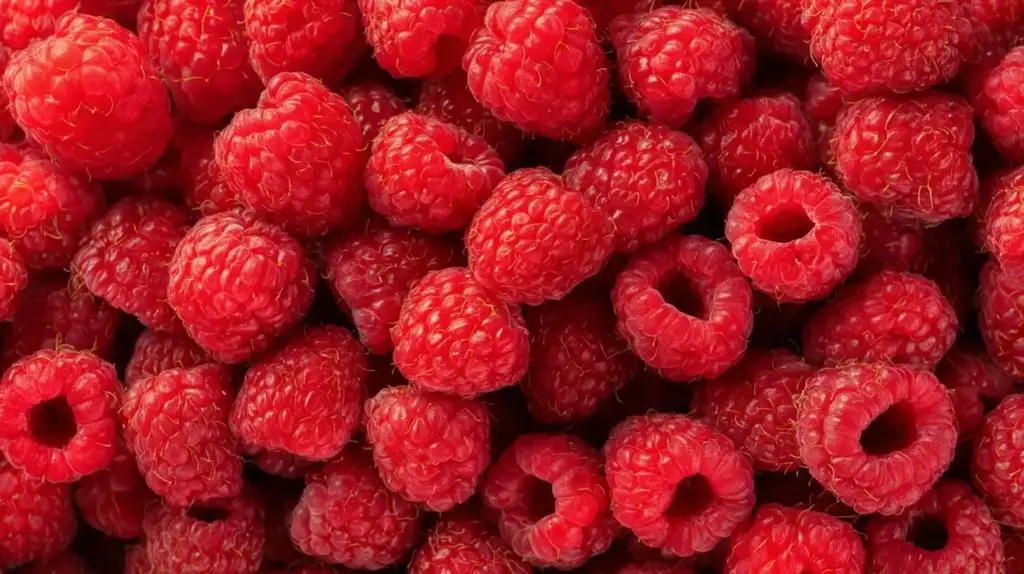
Q1: Can raspberry plants grow in pots or containers?
Yes! Raspberry plants grow very well in pots as long as the container is large enough (at least 18 inches wide) and has good drainage. Container gardening also allows you to control soil quality and move the plant for better sunlight exposure.
Q2: How long do raspberry plants take to bear fruit?
Raspberry plants grown from cuttings or nursery starts may produce fruit within their first or second year. If grown from seed, it usually takes about 18 months for fruit to appear. Ever-bearing varieties may produce two harvests per year.
Q3: Do raspberry plants need a trellis?
While not all raspberry plants require support, upright varieties benefit from a trellis or stake system to:
- Keep canes off the ground
- Improve air circulation
- Make harvesting easier
Trailing varieties especially need support to avoid damage or disease.
Q4: How often should I water raspberry plants?
Water deeply once or twice per week, providing 1–2 inches of water. Raspberry plants prefer evenly moist soil but don’t tolerate soggy conditions. Use mulch to retain moisture and prevent evaporation.
Q5: Are raspberry plants self-pollinating?
Yes! Raspberry plants are self-pollinating, which means a single plant can produce fruit without needing another plant nearby. However, pollinators like bees still help improve yield and berry quality.
Q6: What’s the best fertilizer for raspberry plants?
Use a balanced organic fertilizer such as 10-10-10 NPK, compost tea, or aged manure. Fertilize in early spring when new growth appears and again after the first harvest for ever-bearing types.
Q7: How do I protect raspberry plants from pests?
Common raspberry pests include aphids, spider mites, and fruit flies. Protect your raspberry plants with:
- Neem oil or insecticidal soap
- Companion planting (like marigolds or garlic)
- Regular pruning for airflow
- Removing damaged or diseased canes
Q8: Do raspberry plants lose their leaves in winter?
Yes, raspberry plants are deciduous, meaning they naturally shed leaves in fall or winter. Prune dormant canes during this time and add mulch around the base to protect roots from freezing.
✅ Conclusion
Growing raspberry plants at home is an accessible, rewarding hobby that yields more than just fruit. From vibrant canes that brighten your garden to sweet berries packed with nutrients, raspberries offer something for everyone—especially when nurtured with care and organic methods. Whether you’re starting from seeds or cuttings, these plants reward your efforts with beauty, taste, and health benefits in every harvest.

